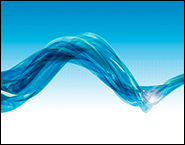The Singapore scientists develop a multi-purpose material which will be able to solve many modern problems from different areas.


The new material which is shown by the Singapore scientists from Nanyansky technological university, will generate hydrogen, to make clear water and even to generate electricity. It also can be applied as a membrane to desalting of water, energy extraction from salty waste, to be used at the heart of the flexible solar panel, and also to double service life lithium - ion batteries. Moreover, it kills bacteria and, for example, can become a basis for new type of antibacterial bandages.
Scientists plan to achieve so outstanding results by means of a revolutionary nanomaterial on the basis of dioxide of the titan (TiO2). This material is created by turning of crystals of dioxide of the titan in special nanofibres which in turn easily turn into a special membrane. This membrane similar to a foil can include various substances, for example tin, zinc, copper, carbon that gives the chance to create materials with various functions.
Dioxide of the titan is the cheap and widespread material possessing a number of useful properties, for example photocatalytic or hydrophilic (can contact water).
Originally signapursky scientists planned to use dioxide of the titan for sewage treatment as in Singapore deficiency of pure fresh water is observed. Dioxide of the titan is suitable for this purpose ideally as it interferes with growth of bacteria which pollute ordinary filters. During development scientists also found out that dioxide of the titan splits sewage on hydrogen and oxygen under the influence of a sunlight and at the same time makes clear water. Such, undoubtedly useful multifunctionality, was still observed only at expensive platinum.
Singaporeans managed to create a special material on the basis of TiO2 which at very small amount of nanomaterials (0,5 grams of nanofibres of dioxide of the titan with a copper oxide) can generate 1,53 ml of hydrogen at an o'clock at immersion in a tank with 1 l of sewage. It is 3 times more than hydrogen, than in the same conditions generates the catalyst from platinum.
By calculations of scientists, depending on type of sewage the new material can make to 200 milliliters of hydrogen in hour. Certainly, at large numbers of a material and volumes of sewage production of hydrogen will increase. Thus the membrane from a new material has hydrophilic properties, that is easily passes water, but detains pollution.
But there is more to come: it is possible to make effective flexible solar panels and anodes of a new material for lithium - ion accumulators, in the latter case capacity grows by 3 times.
No comments:
Post a Comment